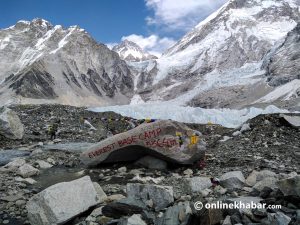In core areas of Kathmandu, an amalgamation of old and new buildings, narrow alleyways, temples and squares, along with the constant hustle and bustle of people create a cultural experience like no other.
It is fascinating to see how these spaces, which play host to numerous jatras and festivals, transform between the day and the night.
Our daily rituals, jatras and festivals may bring the city to life, but it is the traditional private homes that provide the backdrop for these cultural activities. These residences not only exhibit exquisite craftsmanship, achievable only by mastering remarkable construction techniques, but are also home to large joint families.
However, in recent times, Kathmandu has slowly transformed from a city dotted with traditional buildings into a place replete with wedding-cake style buildings shouldered by strange-looking pillars. The water tank on each structure, it seems, has now become a symbol of the appalling architecture of houses in the city.
Also, as ownership of these properties gets fragmented with every passing generation (from father to his son and his brothers), buildings are being vertical divided.
All these things have had a cumulative effect on historic houses that were once the main attract of the city. So, the gradual loss of these homes had been taking place even before the earthquake, the temblor just sped things up.
***
The traditional residential buildings in the core area of Kathmandu were inventoried just before the earthquake last year. The survey (initiated by Impact! Production) found that there were 1,100 residential buildings that could be classified as being ‘traditional’ in the core of Kathmandu. Another survey of a similar kind was carried out in 50 traditional settlements in the Valley by a group of volunteers to assess the situation of the buildings after the earthquake.
A large number of buildings had to be brought down after the earthquake due to the inaccurate assessment of damage by representatives of local bodies. According to those in the know, government officials gave the ‘red sticker’ to buildings which they deemed to be unsafe for living, based on a crude visual assessment.
If a comparative assessment were to be carried out, one would see that that the number of people killed under concrete structures would be much more than those who died inside traditional ones.
Also, architects say that lack of periodic maintenance was the main culprit for the damages the old quarters sustained during the quake.
The houses built before concrete replaced mud were similar in design and height. All of them had three-and-a-half stories, and were attached to the neighbouring house. This, architects say, made the houses more resilient to quakes.
When a structure with pillars fails, the whole building has to be demolished, but this is seldom the case with traditional houses, where localised repair work can be carried out
That the houses are made with local materials sways the sustainability scale in favour of the old house, and the level of insulation the structure gives also is reason enough for anyone to prefer to live in non-concrete houses.
The role of government intervention in preserving monuments and heritages of cultural value has never been as important as it has been in the aftermath of the quake.
According to the Ancient Monument Preservation Act, any building that is more than a hundred years old needs to be conserved, and the government should take the necessary initiative to do so. The laws, however, has never been implemented.
Nonetheless, in the wake of the earthquake, Kathmandu Metropolitan City is now in the process of providing financial incentives to residents to conserve old houses or build new ones following the traditional architectural style.
Besides the financial incentive, the government should also provide subsidies for traditional materials or lower taxes on those buildings whose owners want to preserve their homes.
Community members also need to understand that these residences are a part of our cultural legacy and once they are demolished, they cannot be recovered.
In Patan, private homeowners have achieved a lot in this regard. They restored their homes and added modern amenities to them. Swotha, Newa Chhen and Yeta Chhen (Chhen = house in Newari) can serve as the model for communities to follow.
(The author is currently pursuing a PhD in urban planning and conservation in Australia. She has also worked as an Urban Planner with the Department of Urban Development and Building Construction, Government of Nepal.)
***
Image Credit
Aerial shot of Kathmandu/ Wikimedia Commons. Other images: Shreedhar Poudel/OnlineKhabar
From the archive. First published on 2016/04/26
***
Also read
Photo Story: A year into Gorkha quake, villages & schools in ruins tell a sordid tale
Nepal quake’s ‘Miracle Baby’: Mum wants to make him a doc who can do miracles
After the Nepal quake, caring, and food
A year after the Nepal Earthquake, Kathmandu’s ‘Masked Dancer’ unmasks the regret of his life






















